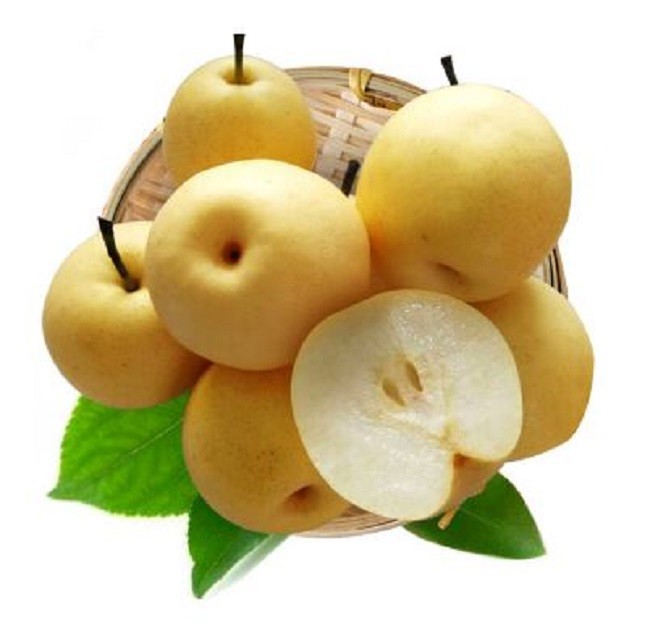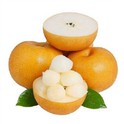As a Crown Pear supplier, I've spent years cultivating these delicious fruits and have gained in - depth knowledge about their growth requirements, especially the type of soil they prefer. Crown Pears, including the well - known Crown Pear and Crown Juicy Pear, are highly sought - after for their sweet taste and juicy texture. To produce high - quality pears, understanding the ideal soil conditions is crucial.
Soil Texture
Crown Pears thrive best in loamy soil. Loam is a balanced mixture of sand, silt, and clay. Sand particles are relatively large, which allows for good drainage. Water can pass through the soil easily, preventing waterlogging that can lead to root rot. Silt particles are medium - sized and contribute to the soil's ability to hold nutrients. Clay particles, on the other hand, are very fine and can retain moisture. In loamy soil, the combination of these three particle types creates an environment where the roots can access water and nutrients while also having enough oxygen.
Sandy soil, although it has excellent drainage, drains water too quickly and may not retain enough nutrients. As a result, Crown Pears grown in sandy soil may suffer from water stress and nutrient deficiencies. The trees may grow more slowly, and the fruits may be smaller and less juicy. On the contrary, clay soil has poor drainage. Water tends to accumulate in clay soil, and the roots may not get enough oxygen, leading to stunted growth and other health problems for the pear trees.
Soil pH
The optimal soil pH range for Crown Pears is between 6.0 and 7.5. This slightly acidic to neutral pH allows the trees to efficiently absorb essential nutrients from the soil. When the soil is too acidic (pH below 6.0), certain nutrients such as phosphorus, calcium, and magnesium become less available to the plants. This can lead to nutrient deficiencies, which are manifested in symptoms like yellowing leaves, poor fruit development, and reduced tree vigor.
If the soil is too alkaline (pH above 7.5), iron, manganese, and zinc may become less soluble and thus less accessible to the roots. To adjust the soil pH, lime can be added to acidic soil to raise the pH, while sulfur can be used to lower the pH of alkaline soil. Regular soil testing is necessary to monitor the pH and make appropriate adjustments.
Soil Fertility
Crown Pears require a fertile soil rich in organic matter. Organic matter, such as compost, manure, and leaf litter, improves the soil structure, enhances water - holding capacity, and provides a slow - release source of nutrients. It also promotes the growth of beneficial soil microorganisms that help break down organic matter and make nutrients more available to the plants.
Nitrogen is an essential nutrient for the growth of Crown Pear trees. It is responsible for leaf and shoot development. However, an excessive amount of nitrogen can lead to excessive vegetative growth at the expense of fruit production. Phosphorus is crucial for root development, flowering, and fruit set. Potassium helps improve the overall health and disease resistance of the trees, as well as the quality of the fruits.
Applying a balanced fertilizer according to the results of soil testing is essential. In addition to chemical fertilizers, organic fertilizers can also be used to maintain long - term soil fertility. For example, well - rotted manure can be applied to the soil around the base of the trees in the fall or spring.
Soil Depth
Crown Pear trees have a relatively deep root system. They require a soil depth of at least 3 to 4 feet to allow the roots to grow and spread freely. Deep soil provides more space for the roots to access water and nutrients, and it also helps anchor the trees firmly.
Shallow soil restricts root growth, which can lead to unstable trees and reduced water and nutrient uptake. In areas with shallow soil, techniques such as soil tillage and the addition of soil amendments can be used to improve the soil depth.
Soil Drainage
Proper soil drainage is vital for Crown Pear trees. Waterlogged soil can lead to oxygen deprivation in the roots, which can cause root diseases and ultimately the death of the tree. In addition to choosing well - drained loamy soil, proper site selection and land preparation are also important.
The planting site should be on a slope or a well - drained area. If the site has poor drainage, installing drainage systems such as French drains or tile drains can be considered. Raised beds can also be an effective way to improve drainage, especially in areas with heavy clay soil.
Impact of Soil Conditions on Fruit Quality
The quality of the soil has a direct impact on the quality of Crown Pears. When the soil conditions are optimal, the fruits are larger, juicier, and have a better flavor. The sugar content of the fruits is also higher, making them more appealing to consumers.


In contrast, poor soil conditions can lead to small, misshapen fruits with a lower sugar content. The fruits may also be more prone to diseases and pests. For example, in waterlogged soil, the trees are more likely to develop fungal diseases, which can affect the appearance and taste of the fruits.
Conclusion
As a Crown Pear supplier, I understand that providing the right soil conditions is the foundation for growing high - quality pears. Loamy soil with a proper pH, high fertility, sufficient depth, and good drainage is ideal for Crown Pears. By carefully managing the soil, we can ensure the healthy growth of the trees and the production of delicious Crown Pears, Crown Juicy Pears, and other related varieties like Golden Pear Fruit.
If you're interested in purchasing our high - quality Crown Pears, please feel free to reach out to us for further procurement discussions. We are committed to providing you with the best products and services.
References
- Brady, N. C., & Weil, R. R. (2008). The Nature and Properties of Soils. Pearson Prentice Hall.
- Hartmann, H. T., Kester, D. E., Davies, F. T., & Geneve, R. L. (2011). Plant Propagation: Principles and Practices. Prentice Hall.






